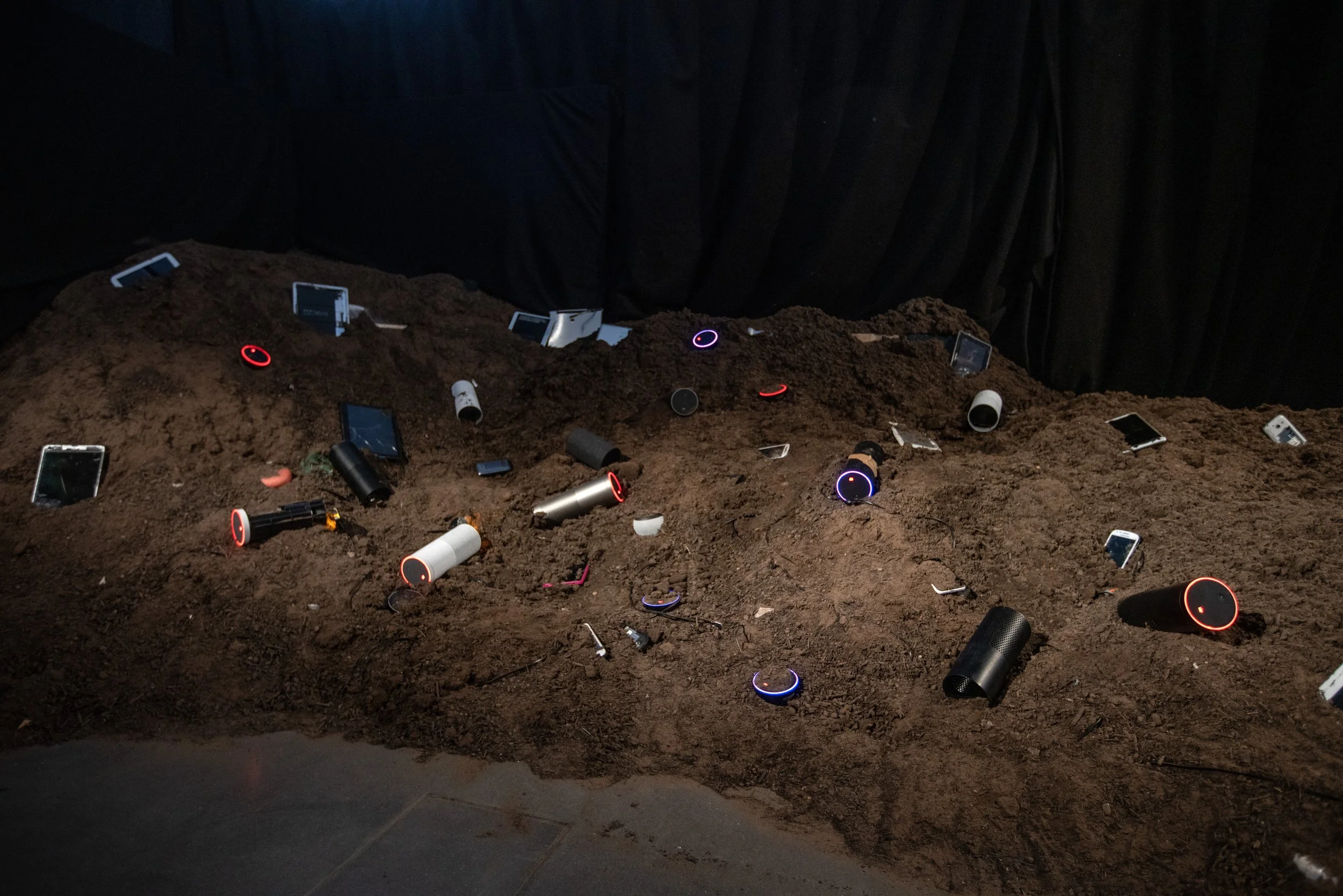How to create inspiring cultural experiences fuelled by AI: with Irini Papadimitriou
Image: Wesley Goatley's Newly Forgotten Technologies from AI: Who's Looking at Me show with the Science Gallery London.
At The New Real, we want to reflect and represent those at the forefront of art and AI – and to work with them to develop actionable strategies and signposts for practitioners.
Here Irini Papadimitriou, Creative Director at FutureEverything and renowned curator of AI arts, looks at what it takes to create significant art and inspiring cultural experiences fuelled by AI
We wanted to know: Putting efficiency and productivity to one side, what are the transformative cultural experiences for audiences? What makes works fuelled by AI interesting or inspiring? How do curators or funders recognise artistic excellence or significance in AI art? How can AI art enrich culture rather than impoverish it? What makes a cultural experience 'intelligent'? What do you hope to see in AI art in the future?
Here is what Irini told us.
—
We need two-way conversations between the arts and technology
A strategy to make a strong cultural experience that’s fuelled by AI, as opposed to something derivative or lacking in substance, is to approach it as a two-way conversation between artistic and technical dimensions in the work. Look at how the AI technologies can be used in unexpected and creative ways in artistic practice; as well as how cultural experiences using AI enable us to demystify the technology and be part of the public conversation, giving a voice to those who may not always be heard, and opening up spaces for a greater diversity of people to take part.
We need work which asks more questions than provides answers
The work I’m most intrigued by brings up much-needed questions about how we engage with AI and how AI impacts private and public spaces – and these pieces open up questions or reframe how we think about AI and the way it shapes society, rather than providing answers or solutions. I’m also inspired by pieces that push us to think about the nature of creativity as well; showing us novel ways to work with AI technology to enhance human creativity and exploration.
Artists can shape new narratives and new ways to think about technology that go beyond productivity
There’s a predominantly one-sided way of thinking about how we use AI in society: that which looks at it through commercial gain, corporate work, productivity, optimisation and capital. I’m interested in how creative professionals can push these ideas in another direction, in really looking at how AI can help us think about non-human intelligence, experience, interaction and narratives. There is so much hype about AI, so much bias, it can be pretty problematic to work with AI, and there are so many tools which are now broadly available – so it’s about moving beyond the trap of the hype. Artists have always played with technology in completely new ways before commercial uses were necessarily discovered and deployed; so it’s about thinking how we can encourage this kind of exploration with AI beyond what we’ve been fed by corporate hype.
Audiences are often inspired and excited by work that breaks stereotypes and challenges what they think they know about AI
There is a lot of media coverage of AI, so audiences have an existing interest in the technology due to online discussion and popular culture. What I think gets audiences excited and interested is work that breaks stereotypes, that thinks beyond what people already know and perceive about AI. Artists can challenge those myths and fantastical visions about tech that we’ve heard through science fiction; artists can help us visualise things we’re not able to see.We need work that challenges our perceptions and ideas, and that opens up new possibilities, visions and perspectives.
We need cultural experiences fuelled by AI to help us explore ‘more than human’ ideas
I’m always thinking about Ursula Le Guin’s idea of technology as a ‘carrier bag’, and how AI can be a carrier for different collective and open narratives that take us beyond our human-dominant stories. Artists have always experimented with new ideas in technology and media, and this creative exploration brings different perspectives to the fore about what those technologies and media are and how we perceive them as humans. It should be the same with AI: there’s lots to be explored surrounding AI that’s not anthropocentric, that is ‘more than human’, and these explorations can help us question the idea of intelligence as being something inherently human, and what the planetary, ecological, and machine intelligence possibilities there may be beyond ‘us’.
To make truly impactful AI cultural experiences there needs to be a human element
It’s important to not forget the importance of human narratives, stories, empathy and our ability to push boundaries. I don’t think AI is creating art autonomously, we’re not there yet and may never be: the way that machine learning works is based on creating endless loops of data – so we need human ideas, questions and creative insight brought to task to challenge AI itself. We also need the human element to help open up new ways of thinking about our ‘human-ness’ itself. Artists respond to contemporary societies at large - looking at broad social issues - but it’s also about expressing and exploring our humanity at the core.
We should encourage critical thinking and not instrumentalise art
I see excellence and significance in cultural experiences fuelled by AI when they open different perspectives and take a critical view to change how we perceive the world. To paraphrase Olivia Laing, artistic research in AI can be training grounds for new possibilities. Those new possibilities will grow when they have space to flourish, and I hope as we move forward into the future of AI and art always making space for exploring diverse ideas, and that we don’t just simply instrumentalise art ‘to serve’ progress.
We need to ask bigger questions when deciding whether to explore AI through our art
We must ask whether it is even necessary to work with AI. It’s key to consider what it actually adds and brings to the conversation. There are many Al ethical questions to consider, such as those surrounding datasets, authorship, environment and so on – of course these don’t just apply to AI artists but to cultural production more generally, but thinking these questions through with respect to your ‘why’ is important. It’s key to ask: ‘Is AI allowing me to ask new questions?’ For those funders and cultural organisations looking to advance AI art, they must again ask bigger questions: what are our ambitions for AI, what do we want it to fulfil, what stories do we want to create, for who, and by whom – it’s about asking those deeper questions, not just jumping on the bandwagon of a technology trend.
–
Irini Papadimitriou is Creative Director of FutureEverything and a Curator in the digital culture context. She is interested in critical conversations around technology, and focuses on how technology such as AI shapes society. She also explores the role of artists and art in enabling those critical technology conversations, and how art fits in within society at large.
These strategies were formulated/articulated/conveyed in an interview with Irini and have been edited for clarity.

